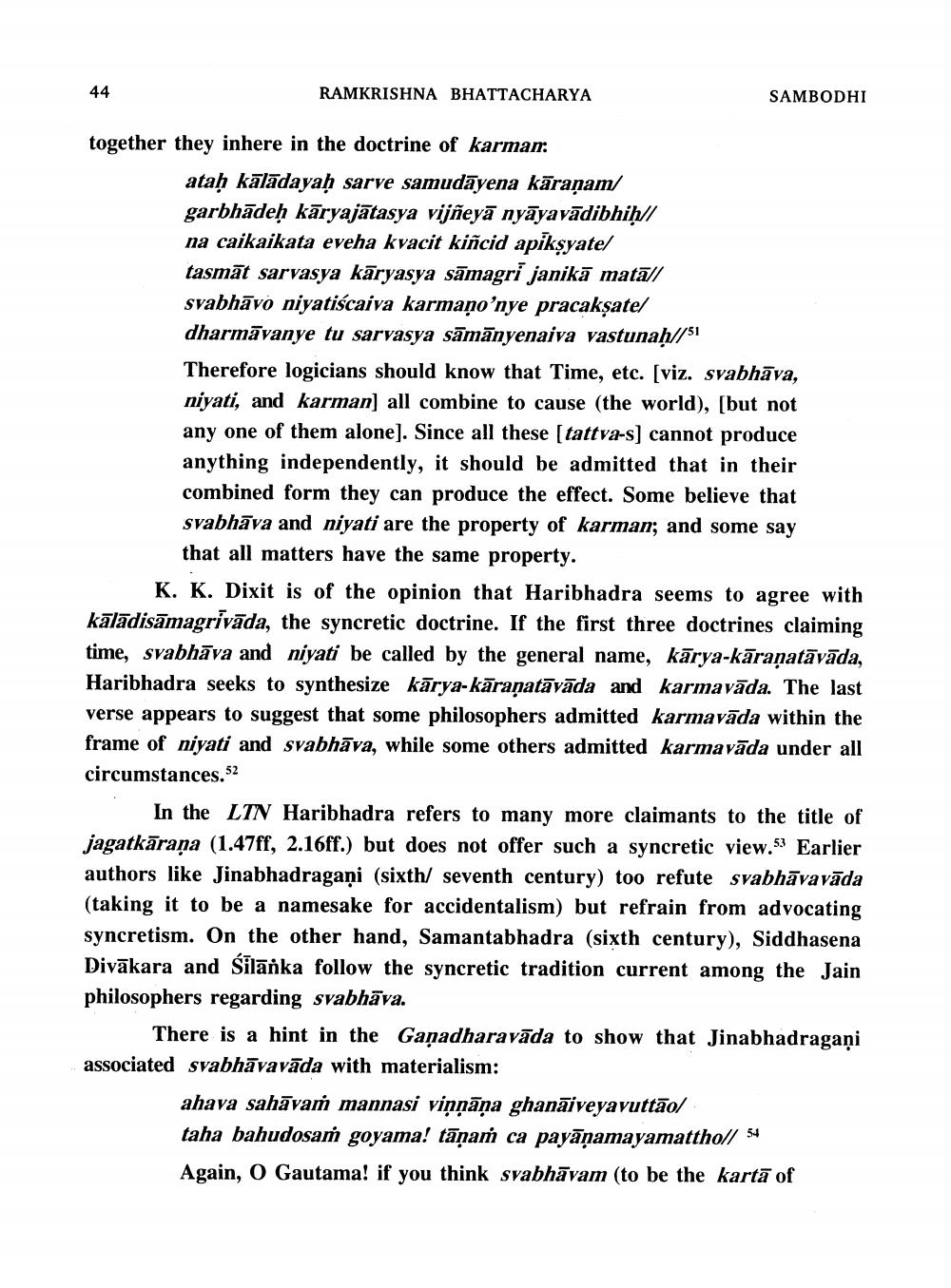________________
44
RAMKRISHNA BHATTACHARYA
SAMBODHI
together they inhere in the doctrine of karman:
ataḥ kālā dayaḥ sarve samudāyena kāraṇam/ garbhādeh kāryajātasya vijñeyā nyāyavādibhiḥ// na caikaikata eveha kvacit kiñcid apiksyate/ tasmāt sarvasya kāryasya sāmagri janikā matā// svabhāvo niyatiścaiva karmano'nye pracakşate/ dharmāvanye tu sarvasya sāmānyenaiva vastunaḥ//51 Therefore logicians should know that Time, etc. (viz. svabhāva, niyati, and karman) all combine to cause (the world), [but not any one of them alone). Since all these stattva-s) cannot produce anything independently, it should be admitted that in their combined form they can produce the effect. Some believe that svabhāva and niyati are the property of karman, and some say
that all matters have the same property.
K. K. Dixit is of the opinion that Haribhadra seems to agree with kālādisāmagrivāda, the syncretic doctrine. If the first three doctrines claiming time, svabhāva and niyati be called by the general name, kārya-kāraṇatāvāda, Haribhadra seeks to synthesize kārya-kāranatāvāda and karmavāda. The last verse appears to suggest that some philosophers admitted karmavāda within the frame of niyati and svabhāva, while some others admitted karmavāda under all circumstances. 52
In the LTN Haribhadra refers to many more claimants to the title of jagatkārana (1.47ff, 2.16ff.) but does not offer such a syncretic view.53 Earlier authors like Jinabhadragani (sixth/ seventh century) too refute svabhāvavāda (taking it to be a namesake for accidentalism) but refrain from advocating syncretism. On the other hand, Samantabhadra (sixth century), Siddhasena Divākara and Silanka follow the syncretic tradition current among the Jain philosophers regarding svabhāva.
There is a hint in the Ganadharavāda to show that Jinabhadragani associated svabhāvavāda with materialism:
ahava sahāvaṁ mannasi vinnāņa ghanāiveyavuttāo/ taha bahudosaṁ goyama! tānam ca payānamayamattholl 54 Again, O Gautama! if you think svabhāvam (to be the kartā of




